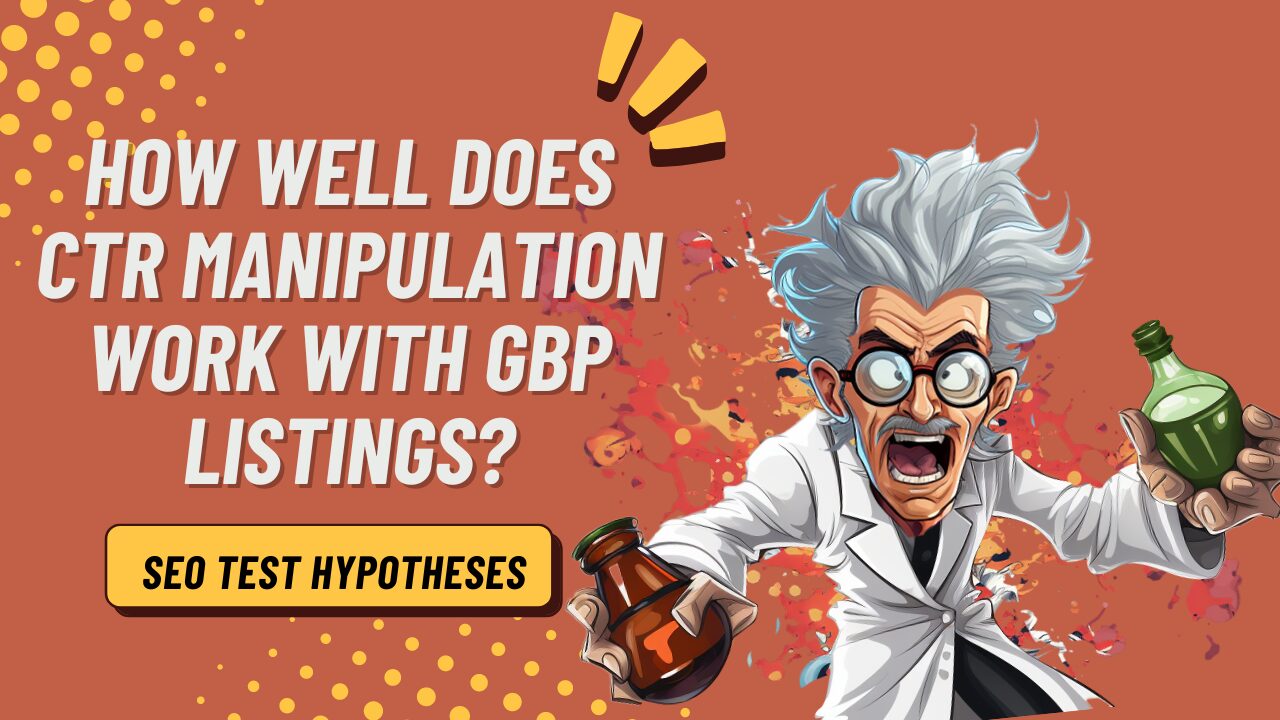Get Even More Clicks on Your Web Site With CTR Control
In today's competitive electronic landscape, grasping click-through rate (CTR) control stands as an essential method for improving web site efficiency. By integrating psychological triggers, maximizing design elements, and performing A/B screening, businesses can considerably increase user interaction.
Recognizing CTR Fundamentals
When it concerns on-line advertising, recognizing Click-Through Rate (CTR) is essential for any kind of site proprietor seeking to maximize their electronic existence. CTR is an important statistics that shows the performance of on-line advertising and marketing and content approaches. It is computed by splitting the variety of clicks an advertisement or link gets by the number of times it was shown, shared as a percentage (CTR Manipulation Press Release). For circumstances, if an ad is shown 100 times and receives 5 clicks, the CTR would certainly be 5%.
A greater CTR typically symbolizes that the content is enticing and appropriate to the target audience, leading to enhanced web traffic and prospective conversions. Alternatively, a low CTR might suggest that the web content fails to involve users or that the target market is misaligned. Site owners need to consistently monitor their CTR to analyze the performance of different digital campaigns, consisting of email advertising and marketing, social media, and pay-per-click marketing.
In essence, recognizing CTR fundamentals prepares for extra sophisticated techniques targeted at boosting involvement and driving workable outcomes. By concentrating on this metric, website owners can make educated decisions that improve their general electronic advertising initiatives.
Emotional Triggers for Involvement
Several online marketers recognize that psychological triggers play a critical function in driving individual involvement and affecting click-through prices. Comprehending these triggers can dramatically boost an internet site's effectiveness in attracting and retaining visitors.
One of the most powerful psychological principles is the concept of scarcity. When users perceive that an offer is restricted in time or amount, they are more probable to act swiftly, fearing they may miss out on out. One more efficient trigger is social proof; showcasing reviews, evaluations, or user-generated material can build trust and urge clicks by showing that others have found worth in the web content or item.
Additionally, the principle of reciprocity can be utilized to promote engagement. By providing important resources, such as free tests or insightful electronic books, online marketers can create a feeling of obligation in customers, prompting them to return the support by clicking through.
Layout Techniques for Higher Clicks
Carrying out effective layout techniques is crucial for improving click-through rates on web sites. The visual pecking order of a webpage plays a considerable function; guaranteeing that vital aspects, such as calls-to-action (CTAs), are plainly displayed can assist users toward wanted actions. Using contrasting shades for CTAs against the page history can increase exposure and urge clicks.
Additionally, integrating white room efficiently permits web content to breathe, making it a lot more absorbable and assisting to accentuate essential components. Responsive layout is also essential; as individuals increasingly gain access to websites by means of numerous devices, ensuring your site adapts flawlessly enhances user experience and interaction.
Typography needs to not be overlooked, as suitable sizes and legible typefaces add to a professional appearance and facilitate easy navigating - CTR Manipulation. In addition, utilizing appealing visuals, such as top quality pictures or LinkDaddy CTR Manipulation video clips, can record customer interest and share your message more effectively
Lastly, utilizing concise and action-oriented language in web links and switches can substantially influence individual behavior. By strategically integrating these layout components, web sites can produce an inviting and intuitive setting that cultivates higher click-through rates, inevitably bring about boosted conversions and individual engagement.
A/B Examining for Optimization
A/B screening works as a powerful device for enhancing website efficiency by enabling marketing professionals to compare two variations of a website to determine which one drives greater engagement and conversions. This approach includes randomly offering two variants-- Version A and Version B-- to various segments of site visitors, enabling a straight comparison based upon individual actions.
To carry out A/B testing successfully, it is vital to define details goals, such as increasing the click-through rate (CTR) on a call-to-action switch or boosting the general conversion price. Marketing professionals should concentrate on one variable at a time, whether it's the photo, headline, or format, making certain that any type of observed adjustments in performance can be credited to that details alteration.
Information collection is crucial in this process. Using analytics devices, marketers can track metrics like bounce rate, time on web page, and conversion price for both variations. After a sufficient sample dimension has actually been reached, the results can be evaluated to establish analytical significance.
Integrating the understandings obtained from A/B screening right into website style not just boosts customer experience yet also fosters a continuous cycle of optimization, eventually causing raised involvement and greater conversion prices.
Ethical Considerations in CTR Manipulation

Morally sound approaches prioritize openness and authenticity. Deceptive users with clickbait or incorrect promises may yield short-term gains yet can learn this here now eventually cause high bounce rates and consumer disillusionment. Brands have to take into consideration the long-lasting effects of their strategies on customer relationships and commitment.

Including ethical considerations into CTR approaches not only cultivates a positive brand picture but additionally grows a faithful target market that appreciates genuine content. Ultimately, services that highlight ethical methods in CTR manipulation are more probable to attain lasting success in an affordable digital landscape. Prioritizing user experience and depend on will certainly cause far better interaction and, consequently, enhanced CTR in the future.

Conclusion
In conclusion, improving click-through prices (CTR) on a web site requires a multifaceted approach that consists of understanding foundational principles, leveraging psychological triggers, and implementing efficient style strategies. Inevitably, a balanced focus on these components will certainly yield sustainable improvements in website efficiency and user interaction.
In today's competitive digital landscape, understanding click-through price (CTR) adjustment stands as a critical approach for boosting website efficiency.When it comes to on the internet marketing, understanding Click-Through Price (CTR) is vital for any kind of web site owner looking to maximize their digital visibility. Conversely, a low CTR might suggest that the content stops working to involve customers or that the audience is misaligned. Prioritizing customer experience and depend on will lead to far better involvement and, as a result, boosted CTR in the long run.
In conclusion, enhancing click-through rates (CTR) on a web site requires a diverse method that includes understanding foundational principles, check my site leveraging psychological triggers, and executing effective design approaches.